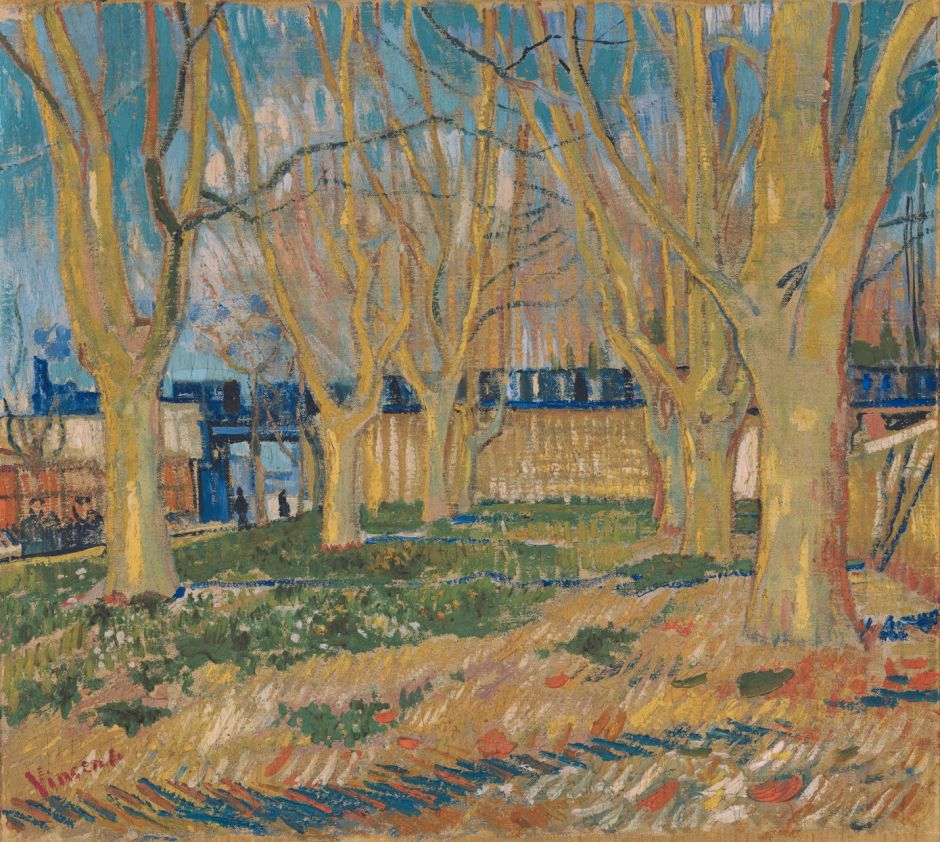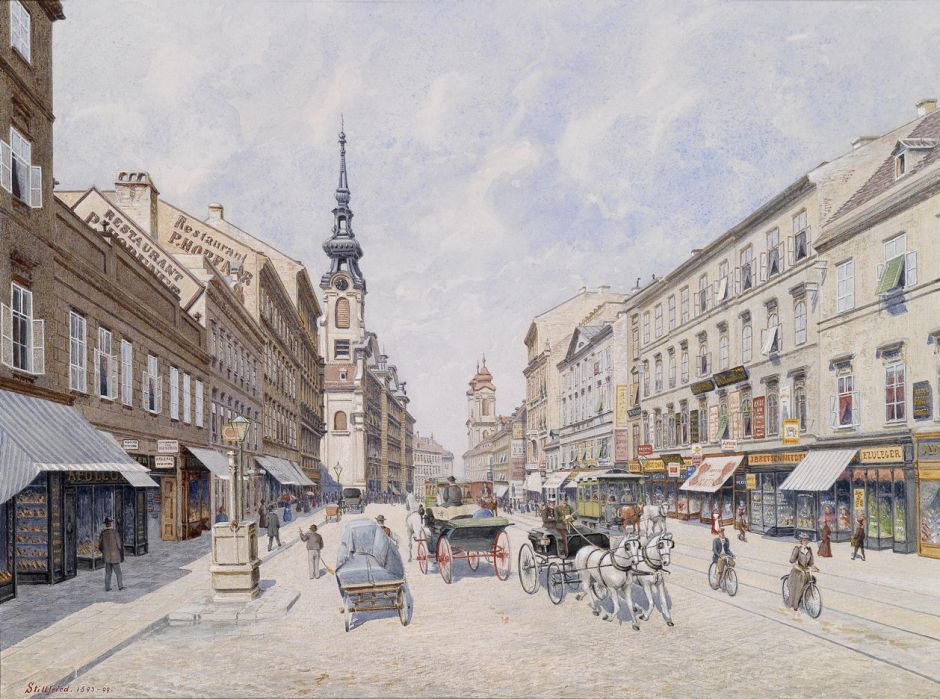In the first of these two articles illustrating the history of transport in paintings, I had reached 1875, when steam was at its height and roads were being prepared to carry more traffic, including the increasingly popular bicycle.
Railways brought major change to countries across the world. In France fast steam trains enabled Paul Cézanne to travel between Paris and his family estate at Aix-en-Provence, and they took many artists, including Pierre Bonnard and the Neo-Impressionists, south to develop the Midi as the centre of avant-garde painting.

In 1888, Vincent van Gogh painted the everyday sight of The Blue Train (Viaduct in Arles), another of the towns made accessible by its railway.

In the centre of large cities like Vienna, conflicting types of traffic brought an increase in road accidents, some of them fatal. Here is a deadly mixture of slow horse-drawn carts, speedy carriages, bicycles, pedestrians, and horse-drawn trams on their tracks. Cyclists could all too easily catch a wheel in those tracks, as shown in Raimund von Stillfried’s watercolour of The Inner Mariahilferstraße (1893-99).
Horse-drawn trams had preceded railways in some parts of Europe, and in some places were hauled by steam before most were electrified late in the nineteenth and early twentieth centuries. While those living in the growing cities packed those trams and buses, the twentieth century finally brought success to those who had been trying to fly.

Just five years after the first manned flight in an aircraft in the USA, Henri Rousseau painted this View of the Bridge in Sèvres and the Hills of Clamart, Saint-Cloud and Bellevue with Biplane, Balloon and Dirigible (1908), providing an excellent overview of the state of aviation at the time.

Painted sometime during the first decade of the twentieth century, Lesser Ury’s Berlin Street Scene with Horse-Drawn Cabs shows among its lines of horse-drawn vehicles one of the early cabs powered by an internal combustion engine, and the start of the next phase of the revolution.

Pioneers in aviation like Louis Blériot extended distances they could travel in the air. Ernest Montaut’s print of Blériot Crossing the Channel on 25 July 1909 (1909) is particularly poignant, as Montaut died later that year at the age of only thirty-one. Best known as a poster artist, Montaut is thought to have been the first graphic artist to use speed lines and perspective distortion, derived from photography, to depict rapid movement. Both are shown here.

Below those intrepid aviators, city streets had become a lethal mixture of different forms of transport. Paul Hoeniger’s view of Berlin’s Spittelmarkt from 1912 shows pedestrians taking their lives into their hands as they cross among horse-drawn vehicles, trams, buses and a few motor cars. Note the complete absence of any form of traffic control.
Scheduled passenger air transport started in 1914, in Florida, shortly before the First World War transformed aviation.

Eric Walter Powell’s view of BE2C Aeroplanes over the Somme from 1916 is one of the first paintings to show the world above the clouds. Although people had become used to aerial views from mountains, when the first aerial photographs were made in about 1885, they showed the earth in a completely novel way. Powell shows this unfamiliar landscape/cloudscape with its oblique view of the ground below, and the scattered small cumulus clouds of a fine day.

In the 1920s, when Lesser Ury painted this view of a Berlin Street in Sunshine, the motor taxi had become popular. Berlin had also started operating the first electric trams in the world in 1881, and its first elevated lines were opened in 1902, by which time most of the city’s tram network was powered by overhead electric lines.

Aviation remained out of reach for the masses, though, who could only escape from the cities by train. Eric Ravilious is one example of a twentieth century artist who painted motifs deeply embedded in the railway, in his Train Landscape (1940).
It took the Second World War to prepare aviation for its surge in popularity.

Paul Nash’s Defence of Albion shows a Sunderland ‘flying boat’ operating in rough seas off the Portland, Dorset, coast in 1942. Among the duties of these aircraft were anti-submarine patrols, and part of a German U-boat is shown in the right foreground to emphasise this, in an unreal composite.
For a while, flying boats took passengers to parts of the world which couldn’t offer runways or airports. Surplus military transport aircraft like the Douglas Dakota were converted to provide workhorses for shorter and domestic passenger routes, and military jet engines were incorporated into airliners to fly us all over the world.

